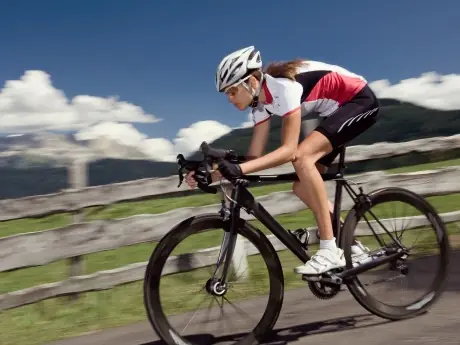“Ultra” activities (4 hours+)
Before You Start
As with shorter activities, it’s crucial to make sure you begin an ultra-distance event or session well hydrated and fueled. It’s part of the reason we make a big deal about preloading with higher sodium drinks before these events. If you try to make up for a deficit during the activity, you’re highly unlikely to perform at your best.
While You’re Sweating
The required rate of fluid and carbohydrate ingestion for ultras is not dramatically different to what you should be aiming for during medium to long events. You’re still limited by the absorption rates in the gut for carbs and fluids, so the ~60g/hr and ~1 liter/hour maximums still apply. However, there are some notable differences to how we’d generally advise approaching fueling for longer events.
- Because you’re going to be out there for much longer, there’s a lot to be said for introducing more variety into your energy and fluid intake so that you don’t become sick of the taste of any one thing.
- You’ll be going at a lower intensity than you would for shorter events, so chewing and digesting more “real” solid foods becomes a lot easier. This opens up a much wider range of possibilities for your race day menu. It also tends to keep your stomach a lot happier than asking it to process nothing but syrupy, sugary goo for hours on end.
- Your sodium intake (along with appropriate amounts of fluid) become far more important during ultra distance events because the risk of hyponatremia increases along with total sweat losses. So, it’s more important than ever to be getting an appropriate level of electrolytes in with your drinks. Of course this is not likely to be a problem if you’re using the right strength electrolyte drink for you, but it’s definitely worth making sure you have a solid understanding of this. If you haven’t already, take our free Online Sweat Test if you want to make sure you’re getting this right.
Listening to your body becomes a critical component of staying properly fueled and hydrated during ultra-distance events. This is because the longer the event goes on, the harder it becomes to predict how your body’s internal chemistry is going to react to the pace, temperature, environment, foods and drinks thrown at it during a long day out.
As a result, you need to be well tuned in to the subtle signals your body uses to tell you when it’s getting out of whack and needs something specific to get it back on track. Look out for a craving for salty foods as this can be an early warning sign that you’re getting a bit low on sodium. If that is the case, eating something salty like salted nuts or pretzels can be a good idea to keep everything balanced.
Some examples of the foods and drinks I’ve successfully used for fueling during ultra endurance events include:
- Boiled new potatoes with butter and salt (DW Canoe race) = ~5g carb per potato.
- Mini croissant with cheese and ham (NZ Coast to Coast race) = ~ 15g carb each.
- Pizza slices (TransAlpine trail run) = ~35g carb per slice.
- Marzipan balls (DW Canoe race) = ~10g per ball.
- Flat Coke (Most long races offer this in the later stages!) = ~ 52g carb per 500ml/16oz.
- Malt loaf with butter (Many long bike training sessions) = ~15g carb per slice.
In most of these cases I used these “real food” alternatives in combination with plenty of the typical pre-packed sports nutrition products (and our drinks) to hit the kind of carb-per-hour figure I needed to achieve. I particularly like Totally Wonderfuel’s handmade energy balls. The fact that many of them are savory is no coincidence, as I’ve found that category of food to be really appealing when I am racing for more than about six hours. Not to mention the fact that I lose 1,842mg of sodium per liter—so I’m often partial to a bit of salt!
Fueling for ultra events always requires a lot of creative trial and error to figure out exactly what works for you. It’s such an important part of these events that it’s worth dedicating some time to getting things right.
When you start experimenting, make sure you’re staying close to the guidelines of ~60g of carbs per hour (across all of your foods and drinks), with enough fluid to stop you getting thirsty and a sufficient amount of sodium to offset what you’re losing in your sweat.
- 3
- of
- 4









Discuss This Article